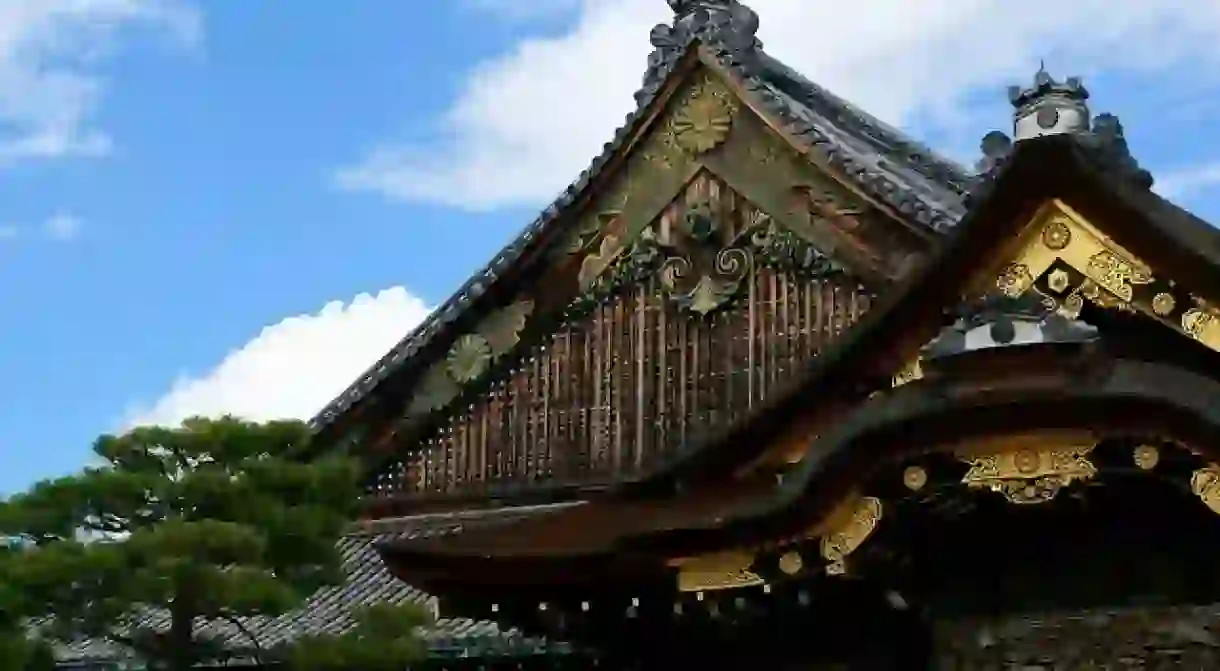Stunning Masterpieces You Can Only See in Kyoto

Kyoto, Japan’s ancient capital is home to an amazing collection of national treasures. These works of art span from ancient Japan to the 19th century, and are treasured for their historic or artistic value. Let’s take a look at 10 masterpieces you can only see in Kyoto.
The Fujin Raijin Zu folding screen at Kennin-ji Temple
Museum

The work of famous painter, Sotatsu Tawaraya, this gorgeous folding screen covered in gold leaf features the God of Wind and God of Thunder. Drawn in the early 17th century, this piece has gone on to inspire and act as the prototype image of these famous Japanese gods. The folding screen at Kennin-ji Temple is a replica with the original housed at the Kyoto National Museum.
The Ninomaru Palace at Nijo Castle

The former Kyoto residence of the Tokugawa Shoguns is an excellent example of 17th century Momoyama Period architecture. Nijo Castle was constructed to showcase the shogun’simmense wealth and power and the Ninomaru Palace boasts 33 rooms, exquisite wood carvings and elaborately painted sliding doors.
The Main Hall at Kiyomizu-dera Temple

Kiyomizu-dera is Kyoto’s most famous temple with its cliff hanging main hall an architectural masterpiece. The main hall is constructed over a cliff and is supported by 18 massive pillars. Amazingly it was built without the use of a single nail and has withstood the test of time, including several major earthquakes.
The Painting of the Blue Cetaka at Shoren-in Temple

Shoren-in Temple has a long and extremely close relationship with the imperial family and is famous for the Painting of the Blue Cetaka (a blue guardian deity of the temple). It is one of only three major cetakas in Japan (blue, red and yellow).
Rengeo-in Sanjusangen-do
Building, Buddhist Temple

The main temple building at Sanjusangen-do is the longest wooden structure in Japan at 120 meters. Completed in 1266 it is famous for its wooden statues of Senju Kannon, which are lined up in an orderly fashion. The 1,001 statues of Senju Kannon all have a different face with a local legend saying that if you look closely, you will see one with the face of the person you want to meet.
Senbon Shakado Daihoon-ji Temple
Buddhist Temple

The main temple building at Daihoon-ji is believed to be the oldest original building still standing in Kyoto. Built in 1221, it is one of the few medieval buildings remaining in Kyoto giving it national treasure status. It has remained intact despite many wars and fires and is known for its many outstanding Buddhist sculptures.
Myokian Taian Tea House
Buddhist Temple

The Five Storey Pagoda at To-ji Temple

To-ji Temple was one of the guardian temples of ancient Kyoto, built to protect the city’s southern edge. It can boast the tallest pagoda in Japan at 57 meters in height, which is also the tallest wooden tower in Japan. The pagoda is a symbol of Kyoto, and dates from the Edo Period (1603-1868), when it was rebuilt by order of the third Tokugawa Shogun, Iemitsu.
The Amida Nyorai Buddha at Byodo-in Temple

The Phoenix Hall at Byodo-in Temple in Uji City in southeast Kyoto is one of the most beautiful buildings in all of Japan. It is so beautiful that it can be found on the ¥10 coin. The hall is home to the Amida Nyorai Buddha, a golden Buddha towering more than nine feet, which was carved by the most famous sculptor of the Heian Period (794-1192), Masuzo Inui.
Kyoto National Museum
Museum

Possibly the best place to see many of Kyoto’s original masterpieces is at the Kyoto National Museum. Many of Kyoto’s famous paintings, statues, lacquerware and artwork is preserved here in this 1897 French baroque style building. The golden age of Kyoto during the Heian Period (794-1192) when the arts flourished is well represented.













